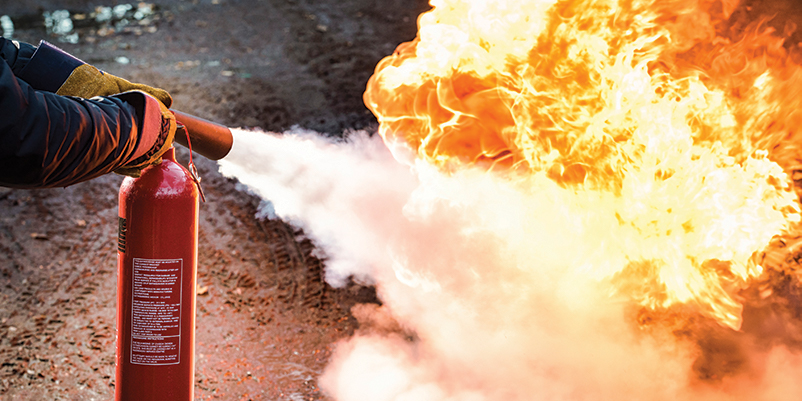In August, the Occupational Safety and Health Administration (OSHA) reached a settlement with an Alabama automobile dealership to resolve citations and penalties issued after three employees were killed and two were injured in a fire at the company’s facility. The dealership will pay nearly $115,000 in penalties for the June 2017 incident.
The investigation determined that the flash fire occurred due to employees using a flammable brake wash to scrub the service pit floor. You may be thinking, “How could this happen?” or “We’ve never had a fire in our shop!” But the reality is, accidents happen every day in all types of facilities across the country. Thankfully, all accidents don’t cause fatalities or even injuries, but the possibility is real. It’s always a good time to review basic safety policies and precautions to prevent tragedies in your place of business.
What Went Wrong?
Under the Occupational Safety and Health Act of 1970, employers are responsible for providing safe and healthy workplaces for their employees. Are you making safety a priority and covering all the bases in your shop?
In the aforementioned incident, the dealership was cited for violating or ignoring several safety basics:
- Failing to implement all elements of a chemical hazard communication program. To ensure chemical safety in the workplace, information about the identities and hazards of the chemicals your shop works with must be available and understandable to employees. OSHA’s Hazard Communication Standard (HCS) requires the development and dissemination of such information. All employers with hazardous chemicals in their workplaces must have labels on these containers and safety data sheets (SDS) for every chemical to which employees may be exposed. Workers must be trained to handle the chemicals appropriately, before their initial assignment and when new hazards are introduced into the work area. Each employer must also describe in a written program how the business will meet the requirements of the HCS in each of these areas
- Improperly storing flammable liquids. There are many requirements regarding where and how to store flammable liquids. In general:
– Only approved containers and portable tanks shall be used to store flammable liquids. Not more than 60 gallons of Category 1, 2 or 3 flammable liquids, and not more than 120 gallons of Category 4 flammable liquids can be stored in a storage cabinet. Storage cabinets and inside storage rooms have fire resistance standards depending on the materials used (metal or wood) and should be labeled “Flammable – Keep Fire Away.” Storage areas, whether indoor or outdoor, have total allowable storage capacities.
– Storage rooms have ventilation requirements and should maintain clear aisles at least three feet wide. Containers with over 30 gallons of capacity shall not be stacked one upon the other. Dispensing shall be by approved pump or self-closing faucet only.
– Flammable liquids shall not be stored so as to limit use of exits, stairways or areas normally used for the safe egress of people. Leaking containers shall be removed to a storage room or taken to a safe location outside the building and the contents transferred to an undamaged container.
– Suitable fire-control devices, such as a small hose or portable fire extinguishers, shall be available at locations where flammable liquids are stored. Open flames and smoking shall not be permitted in flammable liquid storage areas.
– Materials that will react with water shall not be stored in the same room with flammable liquids. - Allowing the use of unapproved electrical receptacles and equipment in a hazardous area. Some common examples of misused equipment include: using multi-receptacle boxes that are designed to be mounted but instead fitting them with a power cord and placing them on the floor; fabricating extension cords with building wire; using equipment outdoors that is labeled for use only in dry, indoor locations; attaching ungrounded, two-prong adapter plugs to three-prong cords and tools; using modified cords or tools, e.g. removing ground prongs, face plates, insulation, etc.; and using cords or tools with worn insulation or exposed wires.
Another common hazardous example is using circuit breakers or fuses with the wrong rating for over-current protection, e.g. using a 30-amp breaker in a system with 15- or 20-amp receptacles. Protection is lost because it will not trip when the system’s load has been exceeded.
After Disaster Strikes
As part of its settlement, the dealership agreed to correct the hazards, provide the required abatement documentation, and comply with safety and health standards.
Make it a priority in your shop to ensure that you’re continually keeping an eye out for dangerous conditions or situations, and training employees annually on the hazards they may encounter on the job. You can’t prevent all accidents, but you can give it your best shot.














